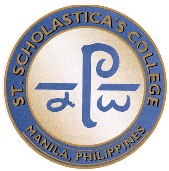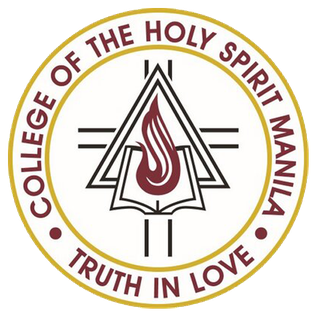
Quezon City, also known as the City of Quezon and Q.C., is the most populous city in the Philippines. According to the 2020 census, it has a population of 2,960,048 people. It was founded on October 12, 1939, and was named for Manuel L. Quezon, the second president of the Philippines. The city was intended to be the national capital of the Philippines that would replace Manila, as the latter was suffering from overcrowding, lack of housing, poor sanitation, and traffic congestion. To create Quezon City, several barrios were carved out from the towns of Caloocan, Marikina, San Juan and Pasig, in addition to the eight vast estates the Philippine government purchased for this purpose. It was officially proclaimed as the national capital on October 12, 1949, and several government departments and institutions moved out of Manila and settled into the new capital city. This necessitated the expansion of the city northwards, carving out Novaliches from Caloocan which divided it into two non-contiguous parts. Several barrios were also taken from San Mateo and parts of Montalban. However, on June 24, 1976, Presidential Decree 940 was enacted, which reverted back to Manila the status of being the national capital while the whole of Metro Manila was designated as the seat of government.

Tagbilaran, officially known as the City of Tagbilaran, is a 3rd class component city and capital of the province of Bohol, Philippines. According to the 2020 census, it has a population of 104,976 people.
The Kapampangan people, Pampangueños or Pampangos, are the sixth largest ethnolinguistic group in the Philippines, numbering about 2,784,526 in 2010. They live mainly in the provinces of Pampanga, Bataan and Tarlac, as well as Bulacan, Nueva Ecija and Zambales.

The Society of the Divine Word, popularly called Verbites or the Divine Word Missionaries, and sometimes the Steyler Missionaries, is a Catholic missionary religious congregation. As of 2020, it consisted of 6,023 members composed of priests and religious brothers working in more than 70 countries, now part of VITA international. It is one of the largest missionary congregations in the Catholic Church. Its members add the nominal letters SVD after their names to indicate membership in the Congregation. The superior general is Paulus Budi Kleden who hails from Indonesia.
The College of the Holy Spirit of Tarlac is a private, Catholic basic and higher education institution run by the Missionary Sisters Servants of the Holy Spirit in Tarlac, Philippines. It was established in 1939 as the Catholic Academy of Tarlac.

Saint Scholastica's College, also referred to by its acronym SSC or colloquially St. Scho is a private Catholic basic and higher education institution for women founded and managed by the Congregation of the Missionary Benedictine Sisters of Tutzing in a 3.66 hectares (36,600 m2) lot in Malate in the city of Manila. It was established in 1906 initially offering elementary academic programs. It started admitting high school students in 1907 and opened its collegiate department in 1920. It pioneered in formal music education in the Philippines, opening a Conservatory of Music in 1907. Although St. Scholastica's College is an exclusive school for women, admission of male students in the Music, Fine Arts, Interior Design, and preschool programs has been allowed.

Miriam College is a non-stock, non-profit Filipino Catholic educational institution for girls and young women in Quezon City, Philippines.

Claret School of Quezon City, also referred to by its acronym CSQC or colloquially as Claret, is a private Catholic basic education institution run by the Missionary Sons of the Immaculate Heart of Mary in Quezon City, Philippines. It was established by the Claretians in June 1967 and was named after its patron saint, St. Anthony Mary Claret, who founded the Claretians in 1849. The school also has a Child Study Center which allows girls up to the Kindergarten level.

Edgardo Migriño Chatto, more commonly known as Edgar Chatto, is a Filipino lawyer and politician who is currently the Representative of the 1st Legislative District of Bohol since 2019. He previously served in that position from 2001 to 2010.

The Holy Spirit School of Tagbilaran, also referred to by its acronym HSST, is a private, Catholic, co-educational basic education institution run by the Missionary Sisters Servants of the Holy Spirit (SSpS) congregationin Tagbilaran City, Bohol Philippines. It was founded by the Holy Spirit Sisters on November 1, 1926 and named Holy Spirit School. In compliance with the K to 12 program of the government it has preparatory, elementary and high school departments. The high school department was originally exclusive for girls, but has gone co-ed since 2001. In 2013, construction began for a new school campus at Purok 3, Dao District, Tagbilaran City, Bohol. Classes at the new campus commenced on November 5, 2015.

Bernadette Lorraine Palisada Dominguez Sembrano-Aguinaldo is a Filipino reporter, newscaster, television host, and musician.

The St. Paul University Manila, also referred to as SPUM or SPU Manila, is a private, Catholic coeducational university. It was previously an all-girls' school and turned co-ed beginning school year 2005-2006. The college was established in 1912 by the Sisters of St. Paul of Chartres (SPC), a congregation founded in Chartres, France in 1698.

Assumption College San Lorenzo, is a private, Roman Catholic basic and higher education institution exclusively for girls run by the Religious of the Assumption in San Lorenzo Village, Makati, Philippines. It was established by the Assumption Sisters in 1958 and named Assumption Convent. Assumption San Lorenzo is the successor of the closed school named Assumption Convent which was located along Herran Street, Ermita, Manila. It provides education from pre-school, elementary, secondary, tertiary, to graduate level. The alumnae and present students of this school include daughters and granddaughters of Presidents, industrialists, politicians, actors/actresses and prominent figures in the Philippines.

La Consolación College Manila is a private Catholic basic and higher education institution run by the Augustinian Sisters of Our Lady of Consolation (ASOLC) in the City of Manila, Philippines. It was founded by the Augustinian Sisters in 1902 when the Apostolic Nuncio to the Philippines offered ten Filipino nuns from the Augustinian Sisters of Our Lady of Consolation a house near the Basilica of San Sebastián.

Saint Pedro Poveda College is a private, Roman Catholic co-educational school run by the Teresian Association of Lay Missionaries, which was founded in Spain.

St. Paul University Quezon City, also referred to as SPUQC or SPU Quezon City, is a private, sectarian and coeducational university located in New Manila, Quezon City. It was previously an all-girls' school and turned co-ed beginning school year 2006-2007.
St. Theresa's College of Quezon City also called by its acronym STC, is a private Catholic basic education institution for girls run by the Missionary Sisters of the Immaculate Heart of Mary in Quezon City, Metro Manila, Philippines. It was officially established on January 7, 1947 by the ICM Sisters but opened only in June 1947.

The College of the Holy Spirit Manila, or simply CHSM, was a private, Catholic education institution founded and ran by the Missionary Sisters Servants of the Holy Spirit in Manila, Philippines. Founded in 1913, College of the Holy Spirit Manila was established originally as Holy Ghost College through the invitation of then Manila Archbishop Jeremias Harty. Located originally at Legarda Street, the present campus is now located in the historic Mendiola Street, inside the Malacañang Palace Complex. It is one of the schools which comprises the Mendiola Consortium (MC) for academic cooperation along with Centro Escolar University Manila, La Consolacion College Manila, San Beda College Manila, and St. Jude Catholic School.















